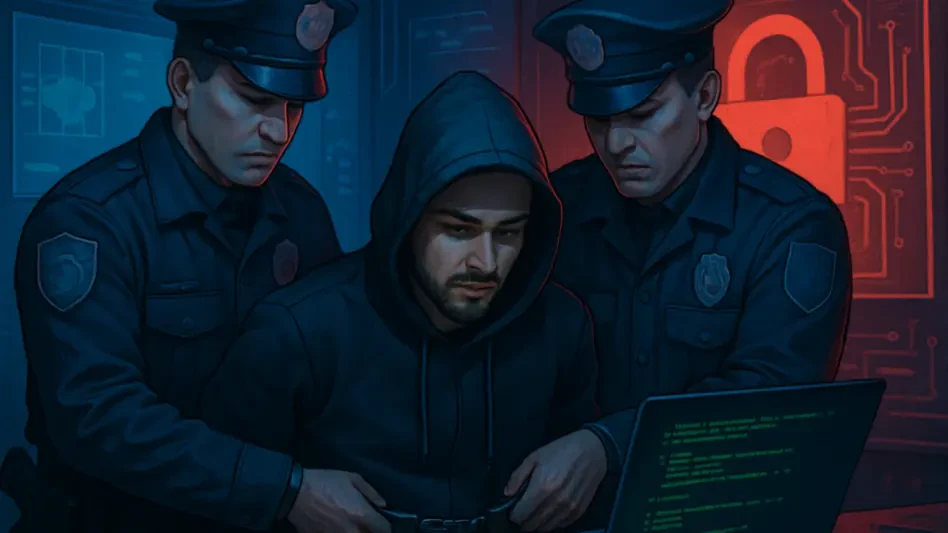In the shadowy corners of the internet, where anonymity reigns supreme, a silent battle unfolds between cybercriminals and the investigators determined to expose their illicit operations. Hidden behind layers of encryption and sophisticated networks like Tor and I2P, the dark web has become a breeding ground for illegal activities ranging from data trafficking to ransomware schemes. As these anonymous platforms grow in complexity, the field of dark web forensics emerges as a critical weapon in the fight against cybercrime. This specialized branch of digital forensics combines traditional investigative techniques with cutting-edge tools to peel back the veil of anonymity, tracing digital footprints across hidden networks. The stakes are high, as the global nature of these crimes demands not only technical expertise but also international collaboration to bring perpetrators to justice. This evolving science stands at the forefront of preserving digital safety, adapting to ever-changing threats in a realm where visibility is deliberately obscured.
The Challenges of Investigating Anonymous Networks
Navigating the Maze of Anonymity
The dark web’s defining feature is its ability to shield users through robust encryption and anonymity tools, posing significant hurdles for forensic investigators. Networks like Tor route traffic through multiple nodes worldwide, masking the origin and destination of data with layers of obfuscation. This design, while originally intended to protect privacy, has been exploited by criminals to operate darknet marketplaces, distribute malware, and facilitate fraud. For investigators, the primary challenge lies in penetrating these defenses without compromising the integrity of the evidence. Traditional forensic methods often fall short when applied to such decentralized systems, requiring specialized approaches to identify hidden services or trace user activity. The global scope of these networks further complicates matters, as jurisdictional boundaries blur, and legal frameworks struggle to keep pace with technological advancements, often leaving investigators to navigate a complex web of international laws and policies to pursue leads.
Overcoming Jurisdictional and Technical Barriers
Beyond the technical intricacies of anonymity, dark web forensics must grapple with the fragmented nature of global law enforcement efforts. Cybercrimes often span multiple countries, with servers hosted in one nation, perpetrators in another, and victims scattered worldwide. This necessitates seamless cooperation among agencies, yet differences in legal standards and data-sharing protocols can hinder progress. Technical barriers also persist, as cybercriminals continuously evolve their tactics, deploying advanced encryption and anti-forensic techniques to evade detection. Forensic teams must therefore integrate tools tailored for dark web environments, such as memory analysis for Tor browsers and blockchain tracking for illicit cryptocurrency transactions. The rapid pace of technological change demands constant training and adaptation, ensuring that investigators remain equipped to counter emerging threats. Addressing these challenges requires not only innovation but also a unified approach to standardize practices across borders, fostering a cohesive response to the pervasive threat of hidden cybercrime networks.
Tools and Techniques Shaping Modern Investigations
Harnessing Specialized Software for Dark Web Analysis
The arsenal of dark web forensics has expanded significantly to include a range of specialized tools designed to uncover hidden evidence within anonymous networks. Software like SpiderFoot and Maltego aids in mapping hidden sites through open-source intelligence (OSINT), enabling investigators to piece together fragmented data from darknet marketplaces or illicit forums. Anonymity network tools, including Tor Browser configurations and I2P routers, are meticulously analyzed to extract traces of user activity despite encryption. Additionally, blockchain forensics platforms play a pivotal role in tracking cryptocurrency transactions, a common currency for dark web dealings, by attributing wallets and analyzing transaction graphs. These tools, combined with classical digital forensics for endpoint analysis, form a comprehensive toolkit that allows investigators to penetrate the layers of anonymity. The integration of such technologies underscores the shift toward specialization, ensuring that even the most concealed digital footprints can be brought to light in the pursuit of justice.
Adapting to Evolving Cybercriminal Tactics
As cybercriminals refine their methods to evade detection, forensic investigators must continuously adapt their techniques to stay ahead of the curve. The rise of sophisticated ransomware operations and hacking-for-hire services on the dark web has prompted the development of advanced platforms like Intelligence X and DarkIntelX, which focus on navigating encrypted communications and hidden services. Memory and disk analysis tailored for Tor environments have become standard practice, allowing experts to recover critical evidence from volatile data. Moreover, the increasing reliance on OSINT-driven darknet monitoring helps in proactively identifying emerging threats before they escalate. This dynamic landscape demands that forensic practices evolve in tandem with technological advancements, incorporating machine learning and automated analysis to process vast amounts of data efficiently. By staying responsive to the shifting tactics of cybercriminals, dark web forensics ensures that law enforcement remains a formidable force against the hidden underbelly of the internet.
Future Pathways for Combating Digital Threats
Strengthening Global Collaboration
Looking back, the journey of dark web forensics reveals a persistent need for international partnerships to tackle the borderless nature of cybercrime. High-profile takedowns of darknet marketplaces in recent years have demonstrated the power of coordinated efforts among global law enforcement agencies. These operations often hinged on shared intelligence and standardized workflows, which bridged gaps in jurisdiction and legal frameworks. Reflecting on past successes, it becomes evident that pooling resources and expertise is essential to dismantling sprawling criminal networks involved in data trafficking and child exploitation. The emphasis on unified protocols and real-time data exchange proves to be a cornerstone in overcoming the anonymity of dark web platforms. As threats continue to evolve, the lessons from these collaborative efforts underscore the importance of sustained commitment to cross-border alliances, ensuring that no corner of the digital underworld remains beyond reach.
Innovating for Tomorrow’s Challenges
Retrospectively, the field of dark web forensics has shown remarkable growth by integrating cutting-edge tools to counter increasingly sophisticated cyber threats. The adoption of cryptocurrency forensics and OSINT-driven monitoring marks significant milestones in tracing illicit financial flows and mapping hidden networks. These advancements highlight the necessity of ongoing innovation to address future challenges. Moving forward, investment in emerging technologies like artificial intelligence could enhance the ability to predict and prevent cybercrime on anonymous platforms. Additionally, fostering public-private partnerships might accelerate the development of new forensic methodologies, ensuring adaptability to novel encryption techniques. Reflecting on past efforts, the focus remains on building a resilient ecosystem of tools and training that empowers investigators to stay ahead of cybercriminals. The path ahead involves a proactive stance—anticipating threats, refining skills, and embracing technological progress to safeguard the digital landscape from hidden dangers.








